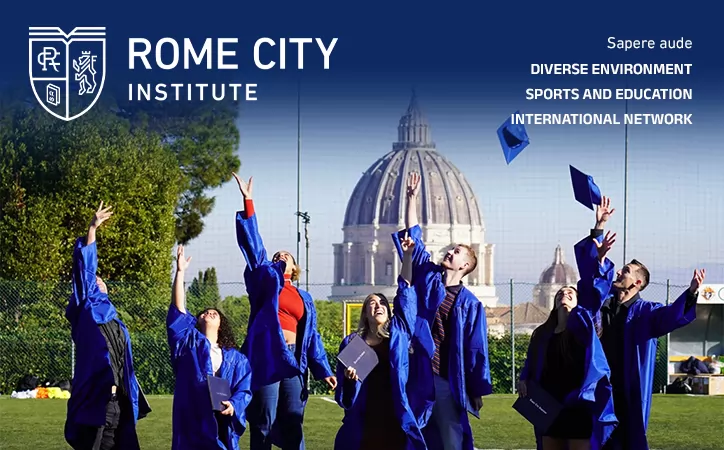Raphael: from Florence to Rome.
Smart, hip, amiable, gifted, with an extraordinary painters facility, Raphael, ascending like a comet, became the darling of the Renaissance. But there was no nonsense about him. Growing up as a courtier serving Federico da Montefeltro, Duke of Urbino, working as an apprentice in one of the botteghe of Perugino, becoming a maestro himself when only 17, he absorbed all the possible influences of his time with deep curiosity and applied them with deft quickness.
He was friends with Mantegna and Signorelli, observed Filippino Lippi, watched Michelangelos and Leonardos moods and struggles while working on their great battle scenes in Florence, stood by when the first Roman sculptures were dug fresh from the ground. He was one of the first to risk starting a work before receiving a commission to paint it; above all he was one of the first to emerge from the mediaeval restriction of the painter controlled by the guild to become the independent professional intellectual. From the sour metallic greens and reds of the Umbrian tradition, his colour eventually reached the light charm of Pompeii in his bright open murals.
Before coming to Rome, he painted the Deposition, a panel that changed his way and the way of the world, breaking with all the formulas. It is about a dead limp heros body in the sling of a bed sheet lugged into the middle of a landscape, the transport of Jesus from cross to grave. The struggle of two groups of people, the intricacy of the shape and interplay of their limbs, is the drama. Contrasts and complexities play like lightning all over the surface, spark it, split it, then unite it.
Unlike Leonardo with his smoky mysteries and research-mania, unlike Michelangelo forever drawn to a contorted muscular movement, Raphael, the pure painter, was into the formal song inside the picture. Not content but structure was the challenge. He honed his wits not with narrative but played hard with the fabric of compositional invention.
This is splendidly obvious in the Deposition, where Raphael is not concerned with perspective but with a slow lateral pull. It works sideways like the ancient friezes on sarcophagi. It has folk art echoes, it has quotes from Laocoon as well as Michelangelo. And its spinning energies are held together by the solidity of the stance of one young boy, neither saint nor aristocrat but as ordinary as that Roman cherry next door, Raphaels mischievous beloved, the bakers daughter (whose portrait is elsewhere in the show). The Deposition, commissioned by Atalanta Baglioni for the funeral chapel of her family, was so outrageously new that it whetted the appetite of the prodigious collector Cardinal Scipione Borghese, who had it taken away in the dead of night to add to his hoard in his new villa, now Galleria Borghese, in the vineyards near Porta Pinciana, which it has graced ever since.
From this breakthrough new work Raphael was raring to go and try himself with wide-open expanses of wall, the fresco. Pope Julius II obliged: at the same time that Michelangelo was busy with the Sistine Chapel, Raphael was given the popes halls, used as business offices, to decorate. Here, he merrily painted out the old works, among them Piero della Francescas. He ruthlessly and measuredly covered the walls and ceilings with four cycles, the finest being the School of Athens a wreath of marvellous moving figures, bright and dynamic and whirling up space. This series in the popes apartments, made possible by the Deposition, was followed by Raphaels last and most wonderful creation: the decorations in the open loggia of the Farnesina villa owned by the Sienese banker Agostino Chigi, all about the nymph Galatea. Here unencumbered bodies moving gracefully are the lyric elements of a gambolling ensemble in sunny Mediterranean space. In the Galatea cycle a businesslike and accomplished painter without anguish or mystery has given us the gift of mysterious delight.
The present exhibition, centred on the revolutionary Deposition, offers brilliant examples from Raphaels immense production, brought together from museums all over the world. There are the Madonna icons, smooth-as-apple-skin oils of young charmers with babies, the intangible bond between mothers and their children made holy. And there is the other facet of Raphael: his portrait pictures of the high and mighty, their characters read with cool precision and insight. Among these is the Dama col liocorno, the blonde Doni lady with her unusual pet, a little unicorn, the answer to Leonardos Mona Lisa.
The Deposition itself, expertly restored, is painstakingly reassembled to its original wholeness: the centre piece is again with the top piece the eternal father and the predella, as well as pieces of its original frame. This is surrounded by a rich collection of preparatory drawings shedding a keen light on the great intensity of Raphaels compositional intelligence, his main game. This grouping, the kernel of the show, presents a profound lesson in art history to the attentive and sophisticated viewer. Let its viewing be completed not being able now to penetrate to the School of Athens in the tourist-choked Vatican by a stroll across the river Tiber to immerse oneself in Raphaels best work, the arcadia of the Galatea series, a primaeval golden Mediterranean world, a Primavera, spacious and bright, serenely singing. Raphael painted it before his death at the age of 37.


















